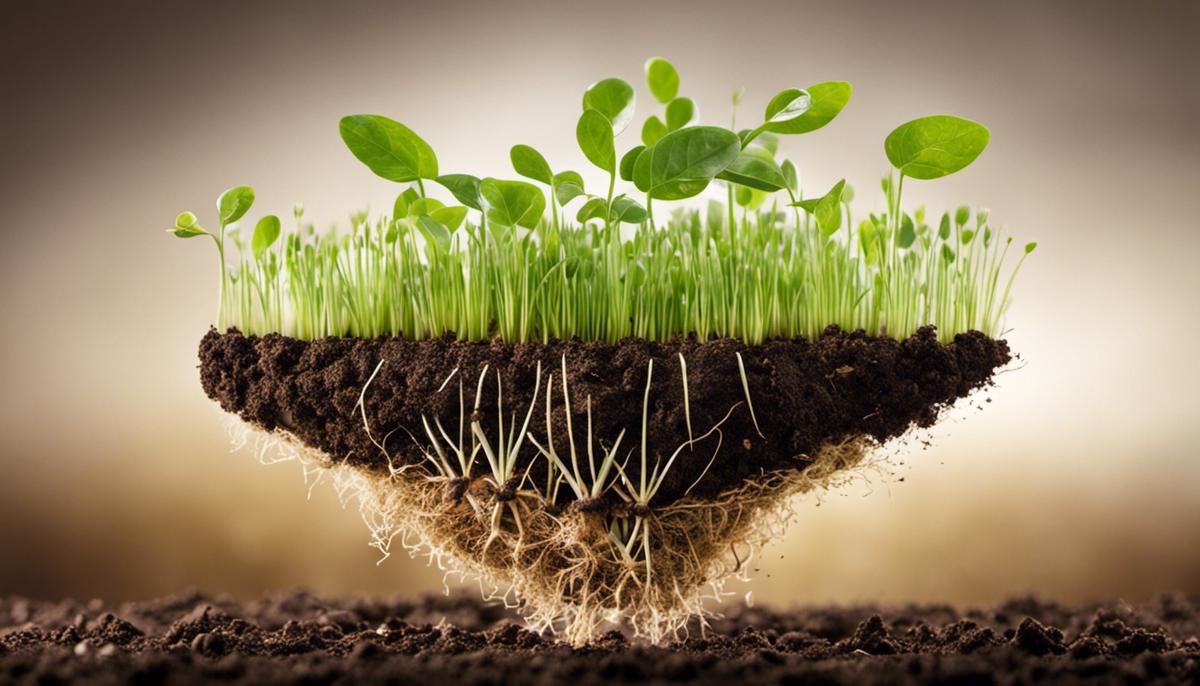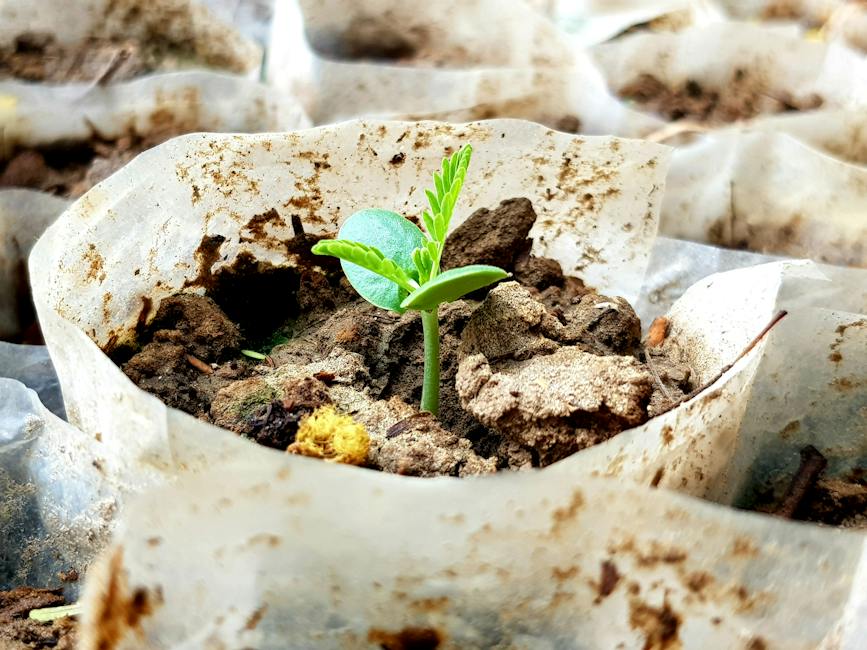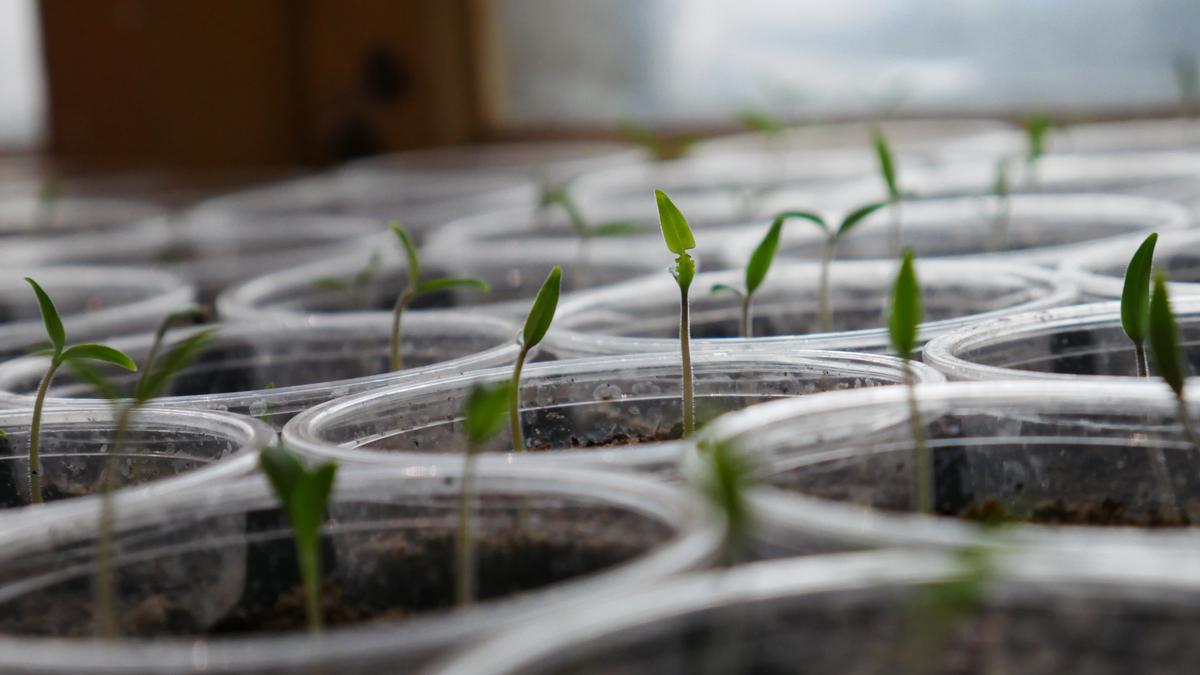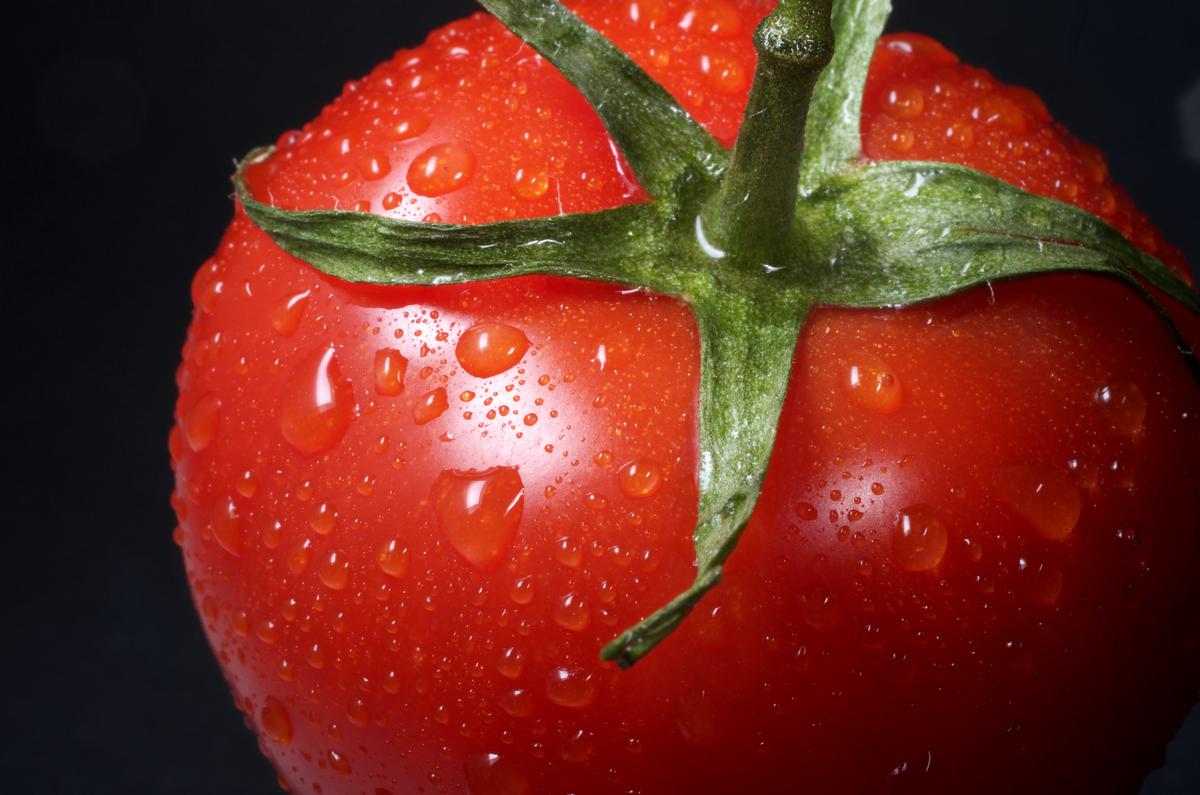Sprouting Tomato Seeds: A Step-by-Step Guide

The magical journey of a tomato seed from dormancy to sprouting a new plant is an awe-inspiring phenomenon. The biological process, known as seed germination, starts with planting and ends with the emergence of a seedling from the seed. This process requires certain optimum conditions, all of which are critical for successful germination. Some of these conditions include suitable temperature, adequate moisture, sufficient light, and fertile soil. Understanding these factors can help us enhance our gardening skills and increase the success rate of our homegrown tomatoes. Moreover, knowing the timeline of tomato seed germination can help us foresee and intervene at the right stages to ensure the healthy growth of tomato plants.
Understanding Seed Germination
The process of germination and sprouting in seeds is a topic of immense intrigue to botanists and curious minds alike.
It is a remarkable occurrence in nature that illustrates the intricate dynamics between biochemistry, cellular biology, and environmental science.
This process blends together numerous complex interactions that demonstrate how even the tiniest seed carries the full potential for the creation of new life.
Seeds, before they embark on their grand voyage of transformation, are in a state of dormancy, conserving energy and awaiting the optimal conditions for germination.
Within the seed is an embryonic plant, equipped with biological programming that it will utilize when the time is right.
As seeds take in water, they undergo a process called ‘imbibition,’ during which water is absorbed by the seed, causing it to swell.
This hydration signals the conclusion of dormancy and commences the metabolic activities within the seed.
Hydration breaks down the inhibitors present inside the seed, signalling it to start germinating.
Temperature then plays a vital role.
Seeds must be in an environment where the temperature is neither too cold, inhibiting growth, nor too hot, which could denature vital enzymes.
An optimal, ‘Goldilocks’ temperature range activates specific biochemical pathways that support germination.
The embryonic plant inside the seed begins its development, starting with the radical (embryonic root), which breaks through the seed coat.
This root initially grows downward, instigated by gravity, a process referred to as ‘geotropism’.
Simultaneously, cells continually divide in an area called the ‘meristem’, a source of continuous growth.
The shoot, inclusive of the stem and leaves, is the next to emerge, growing upward towards the light.
This phenomenon is known as ‘phototropism’, an essential parameter for photosynthesis where chlorophyll in plant cells captures sunlight and coverts it into glucose.
This glucose is vital as it aids in the growth of the seedling, establishing it as a fully independent plant.
The journey that a seed undergoes from a state of dormancy to a sprouting plant is undoubtedly a testament to the elegance and complexity in nature’s mechanisms.
Each step in this process is carefully orchestrated through a combination of biochemical reactions and signals reacting to environmental conditions, ultimately constructing a blueprint for life.
It is through understanding such fascinating processes that we continue to unravel the mysteries and marvels of botanical science.

Optimum Conditions for Tomato Seed Germination
Fostering Optimum Environments for Tomato Seed Germination: An Examination
The propitious germination of tomato seeds is contingent upon an intricate assemblage of environmental factors, amplifying our comprehension beyond the rudimentary understanding of seeds’ dormancy, imbibition, and hydration, embryonic development, and an array of biochemical phenomena. Hold paramount knowledge, however, we are propelling our exploration further into the precise conditions that bolster the germination of tomato seeds.
Firstly, the role of water cannot be overstated. Along with it being central to the hydration and imbibition of the seeds, it aids in creating a conducive milieu for the sprouts. Excessive water, however, may lead to poor aeration and heightened susceptibility to fungal diseases. Accordingly, the smidgen of water that maintains the soil’s moistness without pooling or causing waterlogging is deemed beneficial.
Equally critical is oxygen, a pivotal player in the multifaceted germination process. Seeds, even in their perceived inactivity, engage in cellular respiration, demanding an influx of oxygen. Thus, a well-aerated soil with ample pore space enhances the availability of vital oxygen to the colored gem-like seeds, leading to healthy tomato seedlings.
A careful balance of the pH level also aids in optimizing germination. Tomato seeds are known to thrive in slightly acidic soils with a pH range of 6.0 to 6.8. This relatively low pH helps loosen the soil structure, facilitating seed penetration. Moreover, it encourages nutrient availability, especially the essential micronutrients, fostering robust and sturdy seedlings.
Light, too, is a significant determinant, albeit its role is not as straightforward as one might presume. Germination in tomato seeds is identified as a process of skotodormancy, ensuing optimally in the dark. Nonetheless, during the early stages of development, mild exposure to light can deliver enhanced leaf production and superior stem growth, owing to the phenomenon of phototropism.
Medium to high humidity is another stimulating factor for tomato seed germination. The high moisture levels in the atmosphere aid in the smooth transpiration process while precluding desiccation. However, over saturation may as well trigger fungal infestations, thus a balanced humidity between 70-80% is recommended.
The assertion of the ideal conditions for tomato seed germination not only accentuates the intricate nature of plant science but also circumscribes the constant interplay of multiple variables in a comprehensive system. The pursuit of this understanding holds untapped potential for more profound mastery of botanical science and agricultural productivity.

Photo by iulianpana on Unsplash
The Timeline of Tomato Seed Germination
In delving deeper into the intricate journey that culminates in the sprouting of a tomato seed, it’s crucial to turn our gaze towards the fundamental role that water plays in the germination process. Just as it’s the very lifeblood of mature plants, water is also key in triggering the metamorphosis of a dormant seed into a living, breathing seedling. The seed’s absorptive process called imbibition—the first substantive stage of germination—commences when water permeates the hard seed coat, permeating into the embryo and instigating the onset of metabolic activities.
Simultaneously, oxygen – another life-essential element for most organisms – plays a pivotal role in this process. As water engages with the seed’s cellular structure, it enables oxygen to penetrate the seed’s core. This oxygen, in turn, fuels the metabolic activities occurring within the seed, putting into motion the germination process. The cellular respiration driven by oxygen is what provides the seed the energy it needs to sprout.
While we contemplate the inherent processes at play, it’s important to not overlook the environmental factors that could potentially sway the course of germination. Indeed, the pH levels of the soil are one such determinant. Tomato seeds, being a bit particular, generally favor a slightly acidic environment—with an optimum pH level ranging between 6 and 6.8—for sprouting. Straying beyond these bounds may result in the formation of obstacles to the germination course, as extreme pH levels can hinder the seed’s ability to absorb key nutrients.
Suffice it to stress that germination occurs in the dark recesses beneath the soil’s surface, it’s important to not neglect the influence of light on this critical process. Light—both its intensity and duration—can affect the germination process significantly. For tomato seeds, however, darkness is required during the initial germination period.
In addition to light, the role of humidity in the germination process should not be understated. The soil’s moisture level—directly related to the atmospheric humidity—impacts the water available for imbibition. High humidity levels can promote increased moisture retention in the soil, effectively facilitating the germination process for tomato seeds which favor adequate and consistent moisture.
Recognizing the complex interplay of these various factors enables us to understand that the germination process cannot be boxed into a single timeline— making it somewhat of a Gordian knot. Under optimum conditions, a tomato seed could sprout anywhere between 6 to 11 days. However, variabilities in environmental conditions—temperature, humidity, and pH levels—imply that this range is more fluid than finite.
Overall, understanding the nuances of tomato seed germination is a mastery well worth the effort—its benefits serving not just the realms of botanical science but extending into the vast expanse of agricultural productivity as well. Through this understanding, we inch closer to unraveling the intricate tapestry of the natural world—and in doing so, underline the axiomatic power of knowledge.

There is an element of fulfillment and joy in seeing that first green sprout blooming out of a seed that you’ve sown – it represents the potency of life and the rewards that patience and care bear. By assimilating an understanding of seed germination, nurturing optimum conditions, and keeping an eye on the germination timeline, you can reinforce the success of your tomato garden. After all, learning and applying this knowledge is not just about growing a tomato plant—it’s about participating in the remarkable process of life. And who knows, the tasty tomatoes you harvest might just be more satisfying knowing you were aware of each crucial development from the onset!



